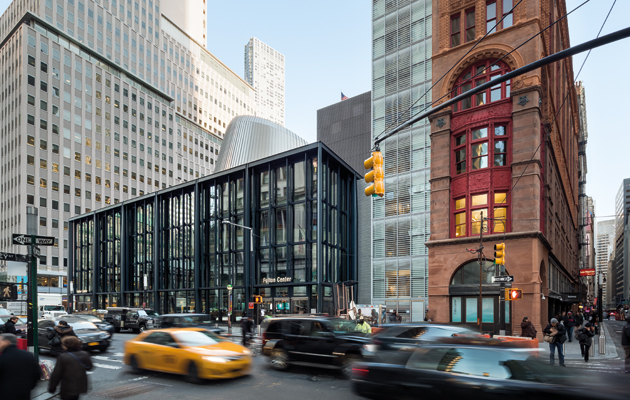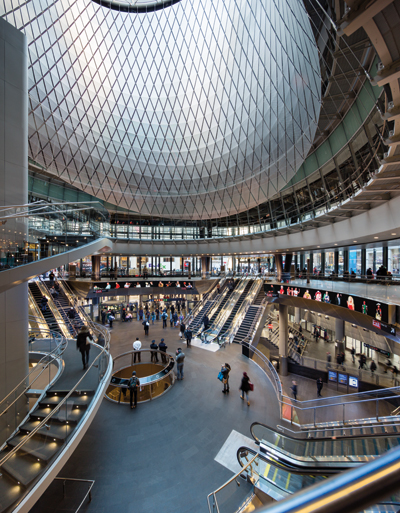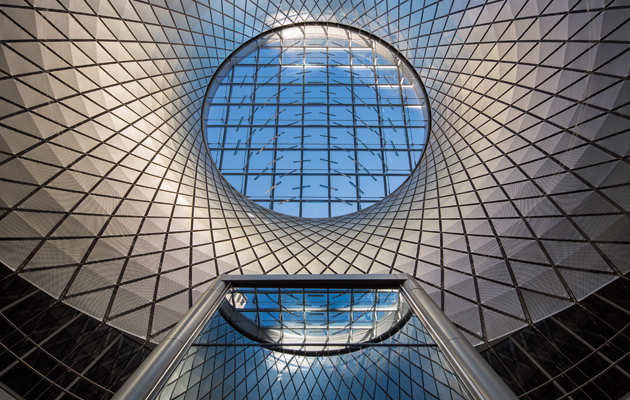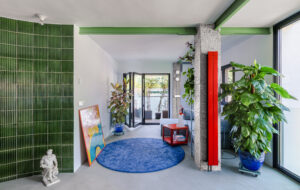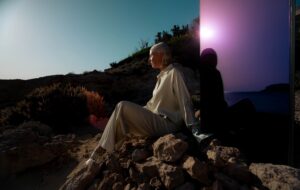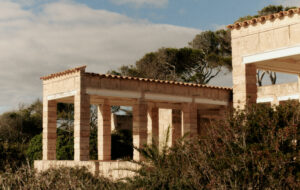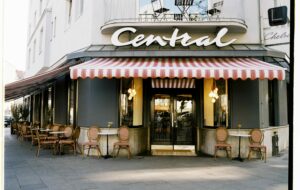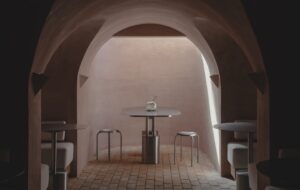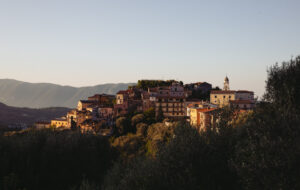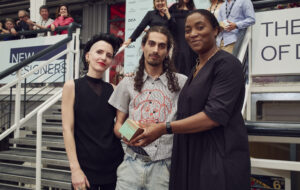|
|
||
|
Grimshaw and Arup have built a major new transit hub in New York’s financial district that is intended to be “Lower Manhattan’s front door” In 1963, New York’s original Penn Station, with its cathedral-like waiting room, was destroyed and its concourses buried under Madison Square Garden. “One entered the city like a god,” lamented the architecture critic Vincent Scully. “One scuttles in now like a rat.” A series of new stations is currently restoring some of the grandeur with which passengers once arrived in Manhattan. At the perimeter of the World Trade Center site, for example, Santiago Calatrava’s PATH station is under construction. It’s crowned by huge, skeletal wings of white steel, intended to symbolise – somewhat jingoistically – an eagle’s outstretched wings. Inside, the effect of the voluminous interior, which is depicted in models as bleached with light, will be more Jonah and the whale. Connected to it by a 100m-long underground passage is Arup and Grimshaw’s new $1.4 billion transit hub, a three-storey glass-and-steel pavilion that dominates the corner of Broadway. “We wanted to create a space that had some of the grandeur of Grand Central Station,” says Vincent Chang, partner at Grimshaw. “It was an inspiration because it showed that you can invest in these magnificent civic rooms, and it’s nice to see the return of transport projects as being about a celebration of civic architecture.” From the street, Fulton Center, with its grey metal exoskeleton, has the high-tech sheen that one might associate with an Apple store. However, unlike Apple’s ghostly glass box on 5th Avenue, its robust cage is designed to withstand bomb blasts. The pattern of the bars, which are placed on the outside of the structure, deliberately echoes the frontage of the 127-year-old Corbin Building next door, a “proto-skyscraper,” which, at 41m, was once the tallest building on the island. “Broadway
An oculus floods the space with light The MTA wanted the project to bring order to the warren of subway lines that intersect in the financial district, which were originally operated by competing companies. The station is designed to ease the congestion that slowed trains: 300,000 people are expected to transfer here every weekday. The architects, who worked on the scheme for over a decade, developed a special software program (called MassMotion) with which to analyse anticipated crowd flows and create ways to encourage people to migrate down the platforms. They also upgraded the sequence of stations. The interior of the pavilion is dominated by a huge funnel, a conical oculus that channels light down to the platforms 12m below ground level. Created in collaboration with designer James Carpenter, the $2.1 million Sky-Reflector Net that lines this void is composed of almost 1,000 diamond-shaped aluminium panels. Carpenter is a specialist in the manipulation of daylight, and the artwork tilts to the south both to draw in and reflect the maximum amount of sunlight. The panels are perforated to different degrees to create a gauzy, diaphanous effect. It is reminiscent of one of James Turrell’s ever-changing “skyspaces”, and at night it is backlit, transforming it into a huge lampshade. When I visited, commuters couldn’t resist looking up and taking photos of the shimmering dome. Around this central skylight, and raised up on V-shaped columns, is a doughnut ring with two levels of retail space. From here you can look back down into the space, as well as out into the surrounding streets. Commuters pass beneath this suspended structure to descend escalators, lifts or an elegant spiral stair, to what Chang refers to as the “lily pad”, a landing space – or “decompressive moment” – that offers clear sightlines through the entire complex, up to street level and down a central lightwell into the lower concourse. “We not only wanted to include clear wayfinding,” Chang says, “but to create a new civic space – one animated by daylight.” |
Words Christopher Turner
Above: The facade echoes the masonry and iron Corbin building
Images: Grimshaw Architects |
|
|
||
|
Sky-Reflector Net, an artwork created with James Carpenter |
||

